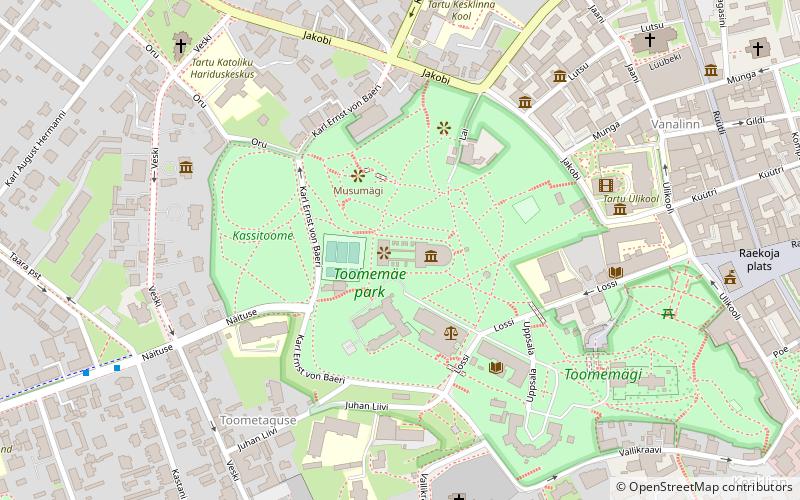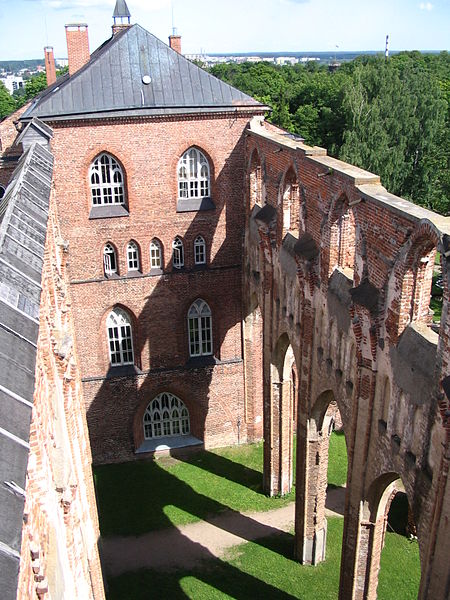Tartu Cathedral, Tartu


Facts and practical information
Tartu Cathedral, located in the picturesque city of Tartu, Estonia, stands as a monumental relic of the area's rich ecclesiastical history. This Gothic structure, though partly in ruins, continues to command respect and admiration for its architectural grandeur and historical significance.
Constructed during the 13th century, Tartu Cathedral was once the seat of the Catholic archbishopric of Livonia. Over the centuries, it has witnessed numerous historical events, including the Protestant Reformation, which led to significant changes in its structure and usage. The church was partially destroyed during the Livonian War, leaving it with the unique, partially-ruined appearance it has today.
Despite its state of partial decay, the cathedral's remaining walls and twin towers still convey the might and influence of the medieval church in Estonia. The site has been preserved and is now home to the University of Tartu's Museum, which showcases the history of the university and the cathedral itself.
Visitors to Tartu Cathedral can explore the museum exhibits and climb the tower, where they are rewarded with a panoramic view of Tartu and its surroundings. The cathedral's vast nave, with its sky-reaching arches and columns, offers a glimpse into the past, allowing visitors to imagine the grandeur of the original structure.
The cathedral is open to the public year-round and serves not only as an educational center but also as a venue for concerts and cultural events, leveraging its excellent acoustics and atmospheric setting.
Tartu
Tartu Cathedral – popular in the area (distance from the attraction)
Nearby attractions include: Tartu Art Museum, Püssirohukelder, Kaarsild, Vanemuine.
Frequently Asked Questions (FAQ)
Which popular attractions are close to Tartu Cathedral?
How to get to Tartu Cathedral by public transport?
Bus
- Näituse • Lines: 3 (7 min walk)
- Lai • Lines: 21, 6, 8 (7 min walk)
Train
- Tartu (14 min walk)











